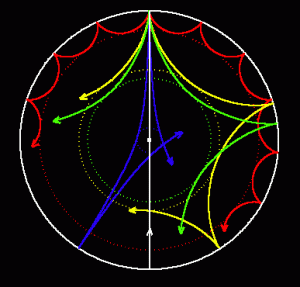Asteroseismology
Asteroseismology allows an unprecedented way to determine the internal structure of stars by studying their oscillations. Recent efforts have been performed allowing the detection of many frequencies in different kinds of pulsating stars. The pulsation is caused by stellar oscillations in three orthogonal directions, radial distance, co-latitude and longitude of the stellar structure.


For 3-D stars there are three quantum indices specify to define oscillation modes. n is related to the number of radial nodes, l is the degree of the mode and specifies the number of surface nodes and m is the azimuthal order of the mode. Determination of oscillation modes in pulsating stars can be used to model the interior structure and hence deduce the temperature and density profiles inside the star. The process of determining l, m and n is known as mode identification and the thesis is concentrated on photometric and spectroscopic observations of Delta Scuti type variable stars. The Delta Scuti type variables are short period variables (less than 1 day) and hence able to observer enough cycles within short epoch.
The asteroseismology can be performed for all types of pulsating stars. Among the pulsating stars, Delta Scuti stars are within the mass range of 1.5 – 2.5 solar mass. They are in a stage of central hydrogen or shell hydrogen burning stage. The oscillations are driven a special region of the stellar interior where atoms of either hydrogen or helium transition from partly to completely ionized. The Delta Scuti stars have both radial and non-radial pulsations with individual periods lying in the range of 0.01 to 0.5 days. Therefore it is possible to cover several cycles within few observation sessions.
Team members: J. Adassuriya (ACCIMT), S. Ganesh (PRL-India), K. P. S. C. Jayaratne (UOC), Jorge Luis Gutierrez Cabello (Spain
AlphaTg: Flux and Limb Darkening Derivatives for Asteroseismology
